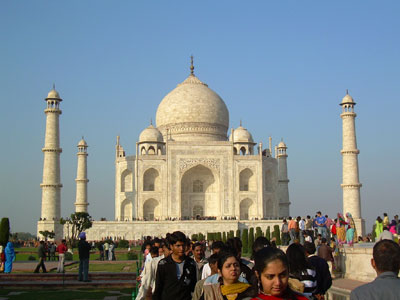India Could Become an Important Trading Partner for Latin America and the Caribbean
Work area(s)
Asian country receives only 0.9% of the region's exports, but there is significant potential for increasing the exchange of goods and services.

(5 December 2011) According to ECLAC, exports from countries in Latin America and the Caribbean to India represented only 0.9% of the region's total exports in 2008-2010 and 6.2% of those sent to Asia-Pacific in 2010. Although the figure was lower than that of exports to other nations, such as Korea and China, there is significant potential for increasing it in the medium term.
In a new publication entitled India and Latin America and the Caribbean. Opportunities and challenges in trade and investment relations, the Organization of the United Nations reveals that the outlook is promising, in particular in the present context of the larger influence of emerging nations in the world economy, including India and the countries of Latin America and the Caribbean.
"On the back of recent global economic events, India and the countries of Latin America and the Caribbean must rethink strategic alliances both globally and regionally. They need to reposition themselves in the world economy and enhance cooperation in innovation and human capital in order to diversify trade, add greater value and apply new knowledge to exports, thus helping to create more stable conditions for growth," stated Alicia Bárcena, Executive Secretary of ECLAC, in the foreword of the publication, which was presented today in Buenos Aires, Argentina, during the seminar, "The New India and the New Latin America- Synergies and Complementarities".
This meeting, organized by ECLAC and the Government of India, was attended by R. Viswanathan, Indian Ambassador to Argentina, Uruguay and Paraguay; Samuel Pinheiro Guimaraes, Secretary-General of the Southern Common Market (MERCOSUR); Marisol Argueta de Barillas, Senior Director and Head of Latin America, the World Economic Forum (WEF); Ambassador Horacio Salvador, Director General of International Economic Negotiations of the Ministry of Foreign Affairs of Argentina; and Osvaldo Rosales, Director of the Division of International Trade and Integration of ECLAC.
According to the publication, India, and the other BRICS countries (Brazil, China, Russia and South Africa), has become one of the most important growth poles of the world. Economies in Asia-Pacific, led by China and India, are growing three times as fast as the industrialized countries.
The Indian economy will surpass that of Japan as the world's third largest economy in 2011 in terms of gross domestic product (GDP) measured by purchasing power parity and has been responsible for almost 10% of world economic growth in recent years.
Countries in Latin America and the Caribbean weathered the recent world economic crisis with unprecedented resilience and emerged from it more quickly and robustly than the developed economies. For this reason, the region is called on to assume an even larger role in the global economy. "India can and should be an active partner in the region's endeavour," stresses the document.
"Countries in the region must work together with India to anticipate this new scenario, adjusting their policies and strategies so as to take advantage of the growing potential of South-South economic links and cooperation," states the publication.
Until now, Latin American trade with India has been concentrated in a small number of countries, led by Argentina, Brazil, Chile, Colombia, Mexico and Peru. The exchange between both parties is still at an incipient stage and is mainly concentrated in primary products and natural resource-based manufactures.
The report concludes that to promote trade and investment flows between Latin America and the Caribbean and India, the region must adopt an approach which firstly, pursues a more efficient and coordinated exploitation of natural resource-based comparative advantages and secondly, makes greater efforts to promote industrial development by improving the international competitiveness in manufacturing sectors.
Any queries should be addressed to the ECLAC Public Information and Web Services Section. E-mail: dpisantiago@cepal.org; Telephone: (56 2) 210 2040.
Follow us on: Twitter, Facebook, Flickr and YouTube.
Country(ies)
- Latin America and the Caribbean
- India
Contact
Public Information Unit
- prensa@cepal.org
- (56 2) 2210 2040